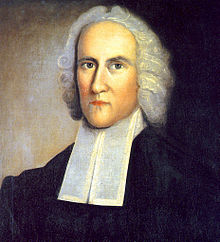Last week we saw the context in which directly preceded the work of Edwards. This week we'll look at what was happening when he began his work in his church in Northampton. By the time Jonathan Edwards began
his work in Northampton in the late 1720s there were numerous changes occurring
to the social structures of Puritan religious, family and economic life. The first major shift was that of the
parent-child relationship. Brekus notes
that the power parents had over their children began to weaken significantly in
the eighteenth century due to a variety of sociological and other cultural
forces and Edwards observed much disrespect by youth for their parents and a
lack of control of youth by their parents.[1]
One of these cultural forces was a major
issue of land ownership, which was occurring during Edwards’s time at
Northampton.[2] In previous generations land was given to
young men as they came of age so they could start their own families. However, land was now becoming scarce, and
land had to be either purchased or inherited.
Failing this, the purchase or inheritance of land, young men would have
to move to a different town or out to the frontier. Ava Chamberlin notes that previously, the
giving on land to a young man was part of his ‘coming of age’ and so the lack
of land led to a prolonged ‘adolescence’ among young people who could not go
through the rites of passage of land ownership, marriage and family creation. [3] The average age of marriage rose to 28.6
years and a distinctive youth culture began to emerge.[4] This culture was, ‘marked by rebellious and
socially unacceptable behaviour’ and Edwards noted, at the beginning of his
pastorate in Northampton, that the youth were, ‘very much addicted to night
walking, and frequenting the tavern, and lewd practices’.[5] This evidence contradicts a prevailing view
outlined previously amongst youth ministry specialists that adolescence began
in the 18th Century and therefore there was no youth ministry prior
to this.[6] Patricia Tracy adds to the work of
Chamberlin and shows that there was a ‘crisis of adolescence’ in the 1730s and
1740s that contributed to the success of the Northampton revivals. [7]
‘It was at this time in much of
New England that young people first had to confront the necessity of making a
choice about what vocation to follow, or even what town to live in, for the
rest of their lives. Socioeconomic
change was cutting them off from the moorings of traditional concepts of work
and community life, and Calvinist doctrines [that Edwards preached] may have
eased the tension of facing a new world.’[8]
So it is clear that Edwards
ministered in a time of fairly rapid change.
Tracy notes that the,
‘Changing circumstances of
practical life were bringing young men more and more into conflict with their
fathers. Their “wild” behaviour, as
commented upon by Edwards and others, signified both their own assertions of
independence and the difficulties that their parents were having in asserting
and enforcing their own authority. When
the advice that an older generation could give no longer seemed to fit present
social realities, and when parents could no longer use economic rewards to
govern their children, there was indeed a decline in traditional family
government.’[9]
It is into this decline of family
government, and growing sense of ‘adolescent’ crisis that Edwards began to
adapt his theological views of youth and children and the way he did ministry
with and to them, and it is to Edward’s response and thought that we now turn.
[1] Brekus, ‘Children of Wrath, Children of Grace: Jonathan Edwards and the
Puritan Culture of Child Rearing’, 308.
[2] Ava Chamberlain, ‘Edwards and Social Issues’, in The Cambridge
companion to Jonathan Edwards (ed. Stephen J. Stein; Cambridge companions
to religion; Cambridge ; Melbourne: Cambridge University Press, 2007), 330.
[6] Chap Clark and Mark Cannister both argue that adolescence is a recent
social phenomenon. However simply because it has only being recently described
and explained by sociologists does not mean that it did not exist in historical
contexts prior to its definition. In fact it is likely that sociologists did
not begin to describe the phenomenon until it was well established. If we are
able to trace the key features of “adolescence” to Edwards’s day as Chamberlin and
Tracy do, then we can show that youth ministry was practiced in that time. Chap
Clark, ‘The Changing Face of Adolescence: A Theological View of Human
Development’, in Starting Right: Thinking Theologically about Youth Ministry
(ed. Kenda Creasy Dean, Chap Clark, and Dave Rahn; Grand Rapids, Mich:
Zondervan/Youth Specialities Academic, 2001), 44–45; Cannister, ‘Youth Ministry’s
Historical Context: The Education and Evangelism of Young People’, 81.
[7] Patricia J. Tracy, Jonathan Edwards, Pastor: Religion and Society in
Eighteenth Century Northampton (American Century Series; New York: Hill and
Wang, 1980), 88.



0 comments:
Post a Comment